-- Author: Lewis L., Toperfect Director.
Portrait Painting
Portrait painting is a kind of painting where the intention is to show the visual appearance of the model. The term is generally applied to the representation of human subjects. In addition to painting, portraits can also be made by means of other media such as engraving, lithography, photography, video and digital media.
The term "portrait painting" can also describe the actual painted portrait. Portraitists can create their work on order for public and private individuals or they may be inspired by admiration or affection for the subject. Portraits are often important documents of the state and families, as well as souvenirs.
Historically, portrait paintings mainly celebrate the rich and the powerful. Over time, however, it has become more common for middle-class clients to have portraits of their families and colleagues realized. Today, portrait paintings are still commissioned by governments, corporations, groups, clubs and individuals.
------------------------------------------------------------------
Technique and Practice of Portrait Painting
A well-executed portrait must show the intimate essence of the object (from the artist's point of view) or a flattering representation, and not just a literal likeness. As Aristotle writes: "The purpose of art is not to present the outward appearance of things but their inner meaning; For this, the external appearance and the details are not the real reality. Artists can tend to photographic realism or impressionistic similarity by representing their subject but this differs from a caricature that attempts to reveal the character by exaggeration of physical traits. The artist generally tries a representative portrait, as Edward Burne-Jones writes: "The only permissible expression in a large portrait is the expression of character and moral quality, nothing that is temporary, ephemeral, or accidental."
In most cases this translates into a serious look and lips closed, anything beyond a faint smile being rather rare historically. Or, as Charles Dickens says: "There are only two styles of portrait painting: The serious and the affected smile." Even taking into account these limits, a full range of subtle emotions is possible, from the calm menace to the sweet contentment. However, with a relatively neutral mouth, a large part of the facial expression must be created with the eyes and eyebrows. As the writer and artist Gordon C. is said: "The eyes are the place to find the most complete, reliable and relevant information" on the subject. And eyebrows can mean, "almost to alone, wonder, pity, fear, pain, cynicism, concentration, nostalgia, discontent and expectation, in infinite variations and combinations."
Portrait painting can represent the object on "all length", in "half-length", "Head and Shoulders" (also called a bust), or "head", as well as profile, three-quarters or "full face", with different directions of light and shade. Artists create from time to time portraits from multiple viewpoints, as Antoine van Dyck does with his Triple portrait of Charles I. There are even a few portraits where the front of the subject is not visible at all. The Christina's World of Andrew Wyeth (1948) is a famous example, where the laying of the crippled girl turning her back to the spectator integrates with the environment in which she is placed to convey the interpretation of the artist.
Another example of a three-quarter-seen portrait, in this case in photography, is in the article portrait.
Among other possible variations, the subject may be dressed or nude; Inside or outside Standing, sitting, lying, or even riding a horse. Portrait paintings can represent individuals, couples, parents and children, families or collegiate groups. They can be created with different materials, including oil, watercolour, pen, pencil, charcoal, pastel and mixed media. Artists can use a wide range of colors as with on the terrace of Pierre-Auguste Renoir (1881) or be confined mainly to white or black, as Gilbert Stuart in his Portrait of George Washington (1796).
Sometimes the overall size of the portrait is an important consideration. The huge portraits of Chuck Close, created for their exhibition in museums, differ greatly from most portraits designed to fit in the home or to travel easily with the client. Often an artist takes into account the place where the definitive portrait will be suspended as well as the colors and style of the surrounding decoration.
The creation of a portrait can take a considerable amount of time, usually requiring more than one installation session. Cézanne, for example, requests more than 100 sessions about him. Goya, for his part, prefers a session of a long day. The average is four sessions. Portraitists sometimes present their models with a portfolio of drawings or photos from which they will choose a preferred pose, as do Sir Joshua Reynolds. Some, like Hans Holbein the younger make a drawing of the face, and then fill the rest of the table without pattern. In the eighteenth century, it usually takes about a year to provide a complete picture to a client.
Managing the expectations and mood of the model is a serious problem for the portrait artist. As for the fidelity of the portrait to the appearance of the model, the portraitists are generally coherent in their approach. Customers who speak to Sir Joshua Reynolds know that they will get a flattering result while those of Thomas Eakins know that they should expect a realistic and ruthless portrait. Some subjects express strong preferences, others let the artist decide everything. Oliver Cromwell's request is famous, which requires his portrait to show "All these asperities, pimples, warts, and everything you see me, otherwise I will never pay a penny for him."
After putting the model at ease and encouraging him to take a natural pose, the artist studies his subject, looking for an expression of the face among many possibilities, which satisfies his concept of the essence of the person. The posture of the subject is also carefully examined to reveal the emotional and physical state of the model, as is the costume. To keep the model engaged and motivated, the skillful artist often keeps a pleasant behavior and conversation. Elisabeth Vigée-Lebrun advises her fellow artists to flatter women and to complement their appearance in order to obtain their cooperation during the session.
The mastery of the knowledge of the human body is essential to the successful execution of the portrait. Human faces are asymmetrical and skillful artists reproduce this feature with subtle differences from left to right. Artists need to be informed about the bone structure and underlying tissues to make a convincing portrait.
For complex compositions, the artist can first make a complete sketch with pencil, ink, charcoal or oil which is particularly useful if the available time of the model is limited. Otherwise, the general shape and then a coarse resemblance are drawn on the canvas in pencil, charcoal or with a fine sketch with oil. In many cases, the face is completed first and the rest thereafter. In the workshops of most of the great portraitists, the master is only the head and the hands, while the clothes and the background will be supplemented by the main apprentices. There are even external specialists who are entrusted with specific elements such as curtains and clothing, such as Joseph van Aken. Some artists in the past have used dolls to help establish and perform laying and clothing. The use of symbolic elements placed around the model (including signs, household objects, animals and plants) is often used to encode the painting with the moral or religious character of the subject, or with symbols representing the craft of Interest or social status. The background can be totally black and without content or a full scene that places the model within its social environment or its leisure.
Self-portraits are usually produced using a mirror, and the finished result is a mirrored portrait, which is a reversal of what happens to a normal portrait when model and artist are located opposite each other. In a autoporter, a right-handed artist seems to hold the brush in his left hand, unless the artist deliberately corrects the image or uses a second reversal mirror while painting.
Sometimes the client or the client's family are not satisfied with the completed portrait and the artist is obliged to retouch or remake or withdraw from the Commission without being paid, enduring the humiliation of failure. The famous portrait of Madame Recamier by Jacques-Louis David, very popular in exhibitions, was rejected by her model, as was the famous portrait of Madame X by John singer Sargent. The portrait of General George Washington by John Trumbull was refused by the committee that commissioned him. The notoriously irritable Gilbert Stuart once responded to a client's dissatisfaction with his wife's portrait by Retorting, "You brought me a potato, and you were expecting a peach!"
A successful portrait, however, can win the lifetime recognition of a client. Count Balthazar was so happy with the portrait that Raphael had created from his wife to her that he told the artist, "your painting... alone can lighten my worries." This image is my delight;. I direct my smiles to her, she is my joy. "
------------------------------------------------------------------
History of Portrait Painting
* Antique
The roots of the art of portraiture probably go back to prehistoric times, although few of these works have come to us. In the art of the ancient civilizations of the Fertile Crescent, especially in Egypt, the representations of the rulers and gods abound. However, most of them are made in a very stylized way, and most of the profile, most often on stone, metal, clay, plaster or crystal. The Egyptian portrait places relatively little emphasis on the likeness, at least until the period of Akhenaten in the 14th century B.C.. The painting of notable portraits in China probably dates back to more than 1000 B.C. Although we did not have any of that period. The Chinese portraits available to us date back to 1000 B.C.
From the literary testimonies we know that the painting of Ancient Greece includes the portrait, often very precise if one believes the praises of the writers, but no painted example remains. The sculpted heads of leaders and famous personalities like Socrates exist in a number and as individualized busts of Hellenistic portraits on coins, it show that the Greek art of portraiture can get a good Likeness and subjects are represented with relatively little flattery--the portraits of Socrates show why he had the reputation of being ugly. The successors of Alexander the Grandcommencent the practice of adding his head (as deified face) to their parts and quickly use theirs.
The Roman portrait adopts the traditions of the portrait of both the Etruscan and the Greeks and develops a very strong tradition, linked to their religious use of the portraits of ancestors, as well as to Roman politics. Again, the few surviving paintings in the portraits of the Fayoum, the tomb of Aline and the Mowo Severiano, all from Egypt under Roman domination, are clearly provincial productions that reflect rather the Greek styles than the styles Romans, but we possess a multitude of carved heads, including many individualized portraits of middle-class tombs, and thousands of types of portraits of coins.
Much of the largest group of painted portraits are funerary paintings that survived the climate drought of the Egyptian district of Fayoum, dating from the 2nd to the 4th century A.D. These are almost the only paintings of the Roman era that survived, apart from the frescoes, although it is known from the writings of Pliny the Elder that the art of portraiture is well established in the Greek era and practiced by the artists men and women. In his time Pliny complains about the state of decline of the art of the Roman portrait, "the painting of portraits which serves to transmit through the ages the precise likenesses of people, has completely disappeared... The indolence has destroyed the arts". These full-face portraits of Roman Egypt are happy exceptions. They have a fairly realistic sense of the proportions and individual details (although the eyes are usually over-sized and the artistic talent varies greatly from one artist to another). The portraits of the Fayoum have been painted on wood or ivory in wax and colors of resin (encaustic) or tempera and inserted in the envelope of the mummies in order to stay with the body for eternity.
While the number of portraits of people standing down in Rome decreases, the art of portrait thrives in Roman sculpture where models demand realism, even if it is unflattering. During the fourth century, the sculpted portrait dominates with the return in favor of an idealized symbolic of what the person looked like. (Compare the portraits of the Roman emperors Constantine Ieret Theodosius I). During the period of late Antiquity, interest in the likeness of individuals declined considerably and most portraits of late Roman coins and consular diptychs were hardly individualized at all, although at the same Time Paleocristiano Art develops fairly standardized images for the portrayal of Jesus and other leading figures of Christian art such as John the Baptist and Peter the Apostle.
* Ages
Most of the first medieval portraits are portraits of donors, first mainly of the popes in mosaics and enluminuresromaines, a good example by being a autoportrait of the writer, mystic, scientist, Illuminator, and musician Hildegarde of Bingen (1152). As with contemporary coins, little effort is being made to resemble. The Stone tomb monuments spread during the Romanesque period. Between 1350 and 1400, secular personalities began to reappear on the frescoes and panel paintings, as in the Charles IV receiving fidelity from Master Théodoric23 and the portraits became clear similarities. Towards the end of the century, the first oil portraits of contemporary individuals, painted on small wooden panels, emerged in Burgundy and France, first in the form of profiles and then according to other points of view. Wilton diptych from ca. 1400 is one of the two surviving panel portraits of Richard II of England, the first king of England for whom we have contemporary examples. Among the major masters of the Flemish primitives of the portrait are Jan van Eyck, Robert Campin and Rogier van der Weyden.
The portraits of donors begin to be presented as gifts, paintings on which they participate in the main sacred scenes represented, and on the more private court images, the subjects appear even in important characters, such as the Virgin Mary.
* Renaissance
The Renaissance marks a turning point in the history of the art of portraiture. Partly for interest in the natural world and partly by interest in the classical cultures of ancient Greece and Rome, portraits-both painted and sculpted-play an important role in Renaissance society and are appreciated as objects and Are representations of land success and status. Painting in general reaches a new level of balance, harmony and understanding and the greatest artists (Leonardo, Michelangelo and Raphael) are considered "geniuses", rising well above the state of trader to that of Valuable servants of the court and the church.
Many innovations in the different forms of portrait art appear during this fertile period. The tradition of miniature portraiture begins, which remains popular until the age of photography, and develops out of the skills of miniature painters of illuminated manuscripts. Profile portraits, inspired by the old medallions, are particularly popular in Italy between 1450 and 1500. The medals, with their double-sided images, also inspire an ephemeral vogue for paintings of this type at the beginning of the Renaissance. The classical sculpture, such as the Apollo of the Belvedere, also influences the choice of poses used by the portraitists of the Renaissance, poses that have remained in use throughout the centuries.
Artists from Northern Europe pave the way for realistic portraits of secular subjects. The greatest realism and details of the artists of the North during the fifteenth century are due in part to a lighter brush touch and to possible effects with oil paintings, while Italian and Spanish painters still use tempera. Among the first painters to develop the oil technique is Jan van Eyck. The oil colors can produce more texture and nuances of thickness and can be coated more efficiently, with the addition of layers increasingly thick one on the other (technique known to painters under the name "fat on Skinny"). In addition, the oil colors dry more slowly, allowing the artist to easily make changes, such as changing facial details. Antonello da Messina is one of the first Italians to take advantage of the oil. Trained in Belgium, he moved to Venice around 1475 and exerted a major influence on Giovanni Bellini and the northern Italian school. During the sixteenth century, oil as a material gained popularity throughout Europe, allowing for more sumptuous renderings of clothing and jewellery. Moreover, the quality of the images is also affected by the passage of the wood panels to the canvases, a transition that begins in Italy at the beginning of the sixteenth century and extends to northern Europe during the next century. Canvases are more resistant to cracking than wood, retain pigments better and require less preparation, but are at first much rarer than wood.
Earlier, Northern Europeans abandoned profile painting and began to produce portraits of realistic volume and perspectives. In the Netherlands, Jan van Eyck is a leading portrait artist. The Arnolfini spouses (1434, National Gallery, London) is a milestone in Western art, the first example of a full-length portrait of a couple, superbly painted in rich colors and in the smallest detail. But equally important, the painting highlights the newly developed technique of oil painting developed by Van Eyck, which revolutionizes art and spreads across Europe.
Among the German portrait masters, Lucas Cranach, Albrecht Dürer and Hans Holbein the Younger, all mastered the technique of oil painting. Cranach is one of the first artists to paint on commissions full-length paintings, a tradition that has become popular from him. At that time, England did not have leading portraitists and artists such as Holbein are wanted by English customers. His painting of Sir Thomas More (1527), his first major patron in England, has almost the realism of a photograph. Holbein enjoyed great success in painting the royal family, including Henry VIII. Dürer is an outstanding draughtsman and one of the first great artists to make a sequence of self-portraits, including a face painting. He also places his face in self-portrait (as Spectator) in several of his religious paintings. Dürer began to make self-portraits at the age of thirteen. Later, Rembrandt will amplify this tradition.
In Italy, Masaccio paves the way for the modernization of the fresco by adopting a more realistic perspective. Filippo Lippi paves the way for the elaboration of sharper outlines and sinuous lines and his pupil Raphael develops realism in Italy at a much higher level in the following decades with his monumental mural paintings. At that time, the engagement portrait became popular, a specialty of Lorenzo Lotto. At the beginning of the Renaissance, painted portraits are usually small in size and sometimes closed by protective lids, hinged or sliding.
During the Renaissance, the nobility Florentine and Milanese in particular, want more realistic representations of themselves. The challenge of creating complete images and convincing three-quarters stimulates experimentation and innovation. Sandro Botticelli, Piero della Francesca, Domenico Ghirlandaio, Lorenzo di Credi, Leonardo da Vinci and other artists broadened their technique accordingly, adding the portrait to traditional religious and classical subjects. Leonardo and Pisanello are among the first Italian artists to add allegorical symbols in their secular portraits.
One of the best-known portraits in the Western world is the painting by Leonardo da Vinci entitled Mona Lisa, named after Lisa del Giocondo, member of the Gherardini family of Florence and Tuscany and wife of a wealthy Florentine silk merchant, Francesco del Giocondo . The famous "Smile of the Mona Lisa" is an excellent example of the application of subtle asymmetry to a face. In his notebooks, Leonardo advises on the qualities of light in portrait painting:
"A very high degree of grace in light and shade is added to the faces of those who sit in the doorways of the rooms that are dark, where the eyes of the observer see the shady part of the face obscured by the shadow of the room , and see the illuminated part of the face with the extra brightness that gives it the air. Through this increase in shadows and lights, it is given more relief to the face».
Leonardo is one of Verrocchio's students. After becoming a member of the Painters ' Guild, he began to accept independent commissions. Because of his broad interests and in keeping with his scientific spirit, his production of drawings and preliminary studies is immense, although his finished artistic production is relatively small. His other memorable portraits include those of the women of the Ginevra nobility of ' Benci and Cecilia Gallerani.
The surviving portraits of Raphael's commission are much more numerous than those of Leonardo and they show a wider variety of poses, lighting and techniques. Rather than producing revolutionary innovations, Raphael's great success is to consolidate and refine the evolution of the currents of Renaissance art. He is particularly expert in the group portrait. His masterpiece The School of Athens is one of the most important frescoes of groups, containing the portraits of Leonardo da Vinci, Michelangelo, Bramant and Raphael himself, under the guise of ancient philosophers. This is not the first group portrait of artists. Decades ago, Paolo Uccello painted a group portrait including Giotto, Donatello, Antonio Manetti and Brunelleschi. As he gained in importance, Raphael became one of the favourite portraitists of the popes. While many Renaissance artists eagerly accepted the orders of portraits, some artists refused them, notably Michelangelo, the rival of Raphael, who instead undertook the enormous commissions of the Sistine Chapel.
In Venice around 1500, Gentile Bellini and Giovanni Bellini dominate the portrait painting. They receive the highest commissions from senior officials of the state. The portrait by Bellini of Doge Loredan is considered one of the most beautiful portraits of the Renaissance and skillfully demonstrates the mastery by the artist of the newly arrived techniques of oil painting. Bellini is also one of the first artists in Europe to sign his work, although he rarely dates them. Later in the sixteenth century, Titian assumed essentially the same role, notably by broadening the variety of poses and sessions of his royal subjects. He is perhaps the first great portraitist of children. After Titian succumbed to the plague, Tintoretto and Veronese, who became the first Venetian artists, contributed to the transition to the Italian mannerism. The Mannerist create many exceptional portraits that emphasize the material richness and the elegant and complex poses, as in the works of Agnolo Bronzino and Jacopo da Pontormo. Bronzino built his fame by painting the House of Medici. His daring portrait of Cosimo I of Tuscany, shows the austere master in armour with a suspicious eye looking at his far right, in stark contrast to most of the royal paintings that show their models as benevolent sovereigns. El Greco, which formed in Venice for twelve years, goes in a more extreme direction after its arrival in Spain, emphasizing its "inner vision" of the model to the point of diminishing the reality of physical appearance. One of the best portraitists of the 16th century Italy is Sofonisba Anguissola of Cremona, which introduces new levels of complexity in his individual and group portraits.
The court portrait in France began when Flemish artist Jean clout painted his opulent portrait of François I of France around 1525. King Francis I is a great patron of artists and an avid art collector who invites Leonardo da Vinci to live in France during his last years. The Mona Lisa stays in France after Leonardo died.
* Baroque and Rococo
During the Baroque and Rococo periods (17th and 18th centuries respectively), the portraits became even more important testimonies of the social status and the position of the models. In a society increasingly dominated by the secular leaders of the powerful European courts, the images of richly clad characters are a means of affirming the authority of the important people. The Flemish painters Sir Antoine van Dyck and Pierre Paul Rubens excel in this type of portrait while Jan Vermeer performs portraits mainly of the middle class, at work or in his interiors. The portrait of Rubens of himself and his first wife (1609) in their wedding dress is a virtuoso example of the portrait of a couple. Rubens ' fame extends beyond his art, he is a courtier, diplomat, art collector and prosperous businessman. His workshop is one of the most extensive of this period and employs specialists of still lifes, landscapes, animals and genre scenes in addition to the art of portraiture. Van Dyck trains there for two years. Charles I of England first appealed to Rubens and then brought Van Dyck as a court painter, the Abhani, and conferred on him the status of court. Van Dyck does not only adopt Rubens ' production methods and business skills but also his appearance and elegant manners. It is said of him that "he always goes beautifully dressed, has many gallant crew and holds such a noble table in his apartment that few princes receive more visits or are better served." In France, Hyacinthe Rigaud dominates in the same way, a remarkable chronicler of royalty, and paints portraits of five French kings.
One of the innovations of Renaissance art is the improved rendering of facial expressions to accompany different emotions. In particular, the Dutch painter Rembrandt explores the many expressions of the human face, especially as one of the first self-portraitists (of which he paints more than 60 paintings during his life). This interest in the human face also promotes the creation of the first caricatures, credited to the Academy of Carracci, led by the painters of the Carracci family at the end of the sixteenth century in Bologna in Italy (see Annibale Carracci).
Group portraits are produced in large numbers during the Baroque period, especially in the Netherlands. Unlike the rest of Europe, Dutch artists do not receive commissions from the Calvinist church that forbid these images or the aristocracy practically non-existent. Instead, orders emanate from civic and corporate associations. The Dutch painter Frans Hals uses vivid coloured brush strokes to brighten his group portraits, including those of the Civil Guard to which he belongs. Rembrandt benefits greatly from these commissions and from the general appreciation of art by bourgeois clients who support both portrait painting and still Life and landscape hinges. In addition the first important art market and the first art dealers prosper in Holland at this time.
As demand is abundant, Rembrandt can experiment with compositions and unconventional techniques, such as the light-obscure. He demonstrates these innovations, developed by Italian masters such as Caravaggio, especially in his famous night-round (1642). Anatomy Lesson of Dr. Tulp (1632) is another fine example of Rembrandt's mastery of group painting, in which he bathes the corpse of light to draw attention to the center of the painting while the clothes and the bottom melt in the No IR, which highlights the faces of the surgeon and the students. This is also the first painting that Rembrandt signed with his full name.
In Spain, Diego Velázquez paints Las Meninas (1656), one of the most famous and enigmatic group portraits of all time. The canvas commemorates the artist and children of the Spanish royal family, and apparently the models are the royal couple that is seen only as a reflection in a mirror. After starting as a genre painter, Velázquez quickly gained notoriety as a painter of the court of Philip IV, where he excels in the art of portraiture, especially by developing the complexity of group portraits.
The Rococo artists, particularly interested in rich and complex ornamentation, are the masters of the refined portrait. Their attention to the details of the dress and the texture increases the effectiveness of portraits as a reflection of the richness of the world, as illustrated by the famous portraits by François Boucher of Madame de Pompadour dressed in swollen silk dresses.
The first great portraitists from the British School were the English painters Thomas Gainsborough and Sir Joshua Reynolds, also specialized in their way of dressing their subjects in an appealing way. The blue child of Gainsborough is one of the most famous and recognized portraits of all time, painted with very long brushes and a fine coloured oil to get the shimmering effect of the blue suit. Gainsborough is also known for the elaborate decorations in which he places his subjects.
The two British artists have opposite opinions on the use of assistants. Reynolds uses them regularly (he sometimes only realizes 20 percent of the paintings) while Gainsborough rarely does. Sometimes a client may demand an engagement from the artist, as did Sir Richard Newdegate on the part of Portraitist Peter Lely (successor to Van Dyck in England), who promises that the portrait will be "from the beginning to the end drawn with my own hands." Contrary to the accuracy used by the Flemish Masters, Reynolds sums up his approach to the art of portraiture by declaring that "grace, and, we can add, the likeness, consist more of taking air in general, than in observing the Exact similarity of each trait. " William Hogarth, another painter who plays an important role in England, dares to go against the classical methods by introducing touches of humour in his portraits. Its autoportrait with Pugest clearly more a hint of humour relative to its pet than a complacent picture.
In the eighteenth century, women painters acquired a new importance, especially in the field of portraiture. Among the notable women artists are the French painter Elisabeth Vigée-Lebrun, the Italian artist of pastel Rosalba Carriera and the Swiss painter Angelica Kauffmann. Also during this century, before the invention of photography, portraits in miniature-painted with incredible precision and often embedded in gold or enamelled medallions-are highly appreciated.
In the United States, John Singleton Copley, trained in the refined British way, became the first full-size painter and miniature portraits, and his hyper-realistic paintings by Samuel Adams and Paul Revere were particularly appreciated. Copley is also noteworthy for his efforts to merge the art of portraiture with the most revered academic art of history painting, a project he tries with his famous military group portraits. Equally famous is Gilbert Stuart who paints more than 1 000 portraits and is best known for his presidential portraits. Stuart paints over 100 replicas of the only George Washington. Stuart works quickly and uses softer and less detailed brush touches than Copley to capture the essence of his subjects. Sometimes it will make several versions for a client, allowing the models to choose their favorite. Known for his rosy cheek tones, Stuart writes "The flesh doesn't look like any other stuff under the sky." She has all the gaiety of the shop of the Mercière without her glitter of brilliance, and all the sweetness of old mahogany, without her sadness. " The other prominent American portraitists of the colonial era were John Smibert, Thomas Sully, Ralph Earl, John Trumbull, Benjamin West, Robert Feke, James Peale, Charles Willson Peale and Rembrandt Peale.
* Nineteenth century
In the late eighteenth and early nineteenth centuries, neoclassical artists perpetuated the tradition of representing subjects dressed in the latest fashions, which for women at the time meant diaphanous dresses from the old styles of clothing Greeks and Romans. The artists use the directed light to define the texture and the simple roundness of the face and the limbs. The French painters Jacques-Louis David and Jean-Auguste-Dominique Ingres show their virtuosity in this technique similar to the drawing as well as their concern to take into account the character of their models. Ingres, a pupil of David, is remarkable for his portraits in which a mirror is painted behind the subject to simulate a back view. His portrait of Napoleon on his imperial throne is a tour de force of royal Portrait. (See gallery below)
Until the nineteenth century, secular portraits of mothers and children generally retained the postures and conventions of the representations of the Virgin to the child: The child painted realistically is naked, on the knees of his mother dressed.
The romantic artists who work in the first half of the nineteenth century paint portraits of charismatic leaders, beautiful women and agitated subjects using vivid and tormented brush strokes with sometimes a light of atmosphere. The French artists Eugène Delacroix and Théodore Géricault produce particularly beautiful portraits of this type, especially of the riders darting. PIOTR Michałowski (1800-1855) is a notable example of an artist from the romantic period in Poland who made a portrait of Cavalier. Also worthy of attention is the series of portraits of Mentally ill by Géricault (1822 – 1824). The Spaniard Francisco de Goya paints some of the most destabilizing and provocative images of the period including the Naked Maja (c. 1797-1800), as well as the famous court portraits of Charles IV of Spain.
The realist artists of the nineteenth century, such as Gustave Courbet, create objective portraits that stage people of the middle and lower classes. To demonstrate his romanticism, Courbet paints several self-portraits showing himself in various moods and expressions. Other French realists include Honoré Daumer who has produced many caricatures of his contemporaries. Henri de Toulouse-Lautrec painted the chronicle of some of the famous artists of the theatre, including Jane Avril and seized them in motion. The French painter Édouard Manet is an important transition artist whose work oscillates between realism and Impressionism. He is an insightful portrait artist with exceptional technique whose portrait of Stéphane Mallarmé is a good example of the transition style. His contemporary Edgar Degas is essentially realistic and his canvas Portrait of the Bellelli family is a penetrating rendering of an unhappy family and one of his most beautiful portraits.
In America, Thomas Eakins reigned as the first portrait painter and hoisted realism to a new level of openness, especially with his two portraits of surgeons at work, as well as those of athletes and musicians in action. In many portraits, such as the Portrait of Mrs. Edith Mahon, Eakins boldly expresses the unflattering emotions of sadness and melancholy.
For the most part, the realists give way to the Impressionists in the years 1870. Partly because of their meagre incomes, most impressionists rely on their families and friends to serve as role models and paint many intimate groups and simple people in the outdoors or in light-filled interiors. Known for their shimmering surfaces with rich touches of paint, impressionist portraits are often disarming with intimacy and seduction. French painters Claude Monet and Auguste Renoir create some of the most popular images of individual models and groups. The American artist Mary Cassatt, who studies and resides in France, is very popular today still for her moving paintings of mothers and children, as is Renoir. Paul Gauguin and Vincent van Gogh, both Impressionists, paint revealing portraits of people they know, swirling in colour but not necessarily flattering. They are also, if not more, famous for their powerful self-portraits.
The Brittany innkeeper Marie-Angélique Satre (1868-1932) alias "La Belle Angèle" was immortalized in 1889 by Paul Gauguin whose work La Belle Angèle, written in capital letters on the canvas, currently sits at the Musée d'orsay.
John singer Sargent also rides the change of the century but rejects manifest Impressionism and post-impressionism. He is the most prosperous portrait painter of his time and uses an essentially realistic technique often raised by the brilliant use of color. He is equally capable of individual and group portraits, especially of upper-class families. Sargent was born in Florence, Italy to American parents. He studied in Italy, Germany and Paris. He is considered to be the last major representative of the tradition of the British portrait begun by Van Dyck. William Merritt Chase is another leading American portraitist trained abroad. A painter of American society, Cecilia Beaux, called the "Woman Sargent", was born to a French father. She studied abroad and was successful back in the United States, but was sticking to traditional methods. Another portraitist compared to Sargent for his lush technique, the Parisian artist of Italian origin Giovanni Boldini, friend of Degas and Whistler.
The American-born internationalist James Abbott McNeill Whistler is in contact with European artists and also paints exceptional portraits, the most famous of them being his Arrangement in grey and black, mother of the Artist (1871), also known Under the name "Whistler's mother". Even with his portraits, as with his soundscapes, Whistler wants his viewers to focus on the harmonic arrangement of shape and color in his paintings. Whistler uses a sober palette to create its expected effects, emphasizing color balance and soft tones. He writes, "as music is the poetry of sound, painting is the poetry of sight, and the object has nothing to do with the harmony of sound or color." The shape and color are also at the heart of Cézanne's portraits, while even more extreme colours and brush stroke technique dominate the portraits of André Derain and Henri Matisse.
The development of photography in the nineteenth century has a significant effect on the portrait, supplanting the previous camera obscura which had also already been used as a painting aid. Many modernists flock to the photography studios to have their portraits made, including Baudelaire who, although he proclaimed the photograph "an enemy of Art", is attracted by the franchise and the power of photography. By offering a cheap alternative, photography supplants most of the lowest levels of portrait painting. Some realistic artists, such as Thomas Eakinset Edgar Degas, are enthusiastic about the camera and find it to be a useful aid to composition. From Impressionism, portraitists find a myriad of ways to reinterpret the portrait in order to compete effectively with photography. Sargent and Whistler are among those encouraged to develop their technique to create effects that the camera can not capture.
* Twentieth Century
Other artists at the beginning of the twentieth century also broadened the portrait repertoire to New directions. The Fauvist Henri Matisse produces powerful portraits using non-naturalistic colors, even garish, for skin tones. Cézanne relies on very simplified forms in his portraits, avoiding the details while emphasizing the juxtapositions of colors. The unique style of the Austrian Gustav KLIMT applies byzantine motifs and gold painting to his memorable portraits. His pupil Oskar Kokoschka is an important portraitist of the upper class of Vienna. The prolific Spanish artist Pablo Picasso paints many portraits, including several cubist of his mistresses, in which the image of the object is roughly distorted to obtain an emotional declaration far beyond the limits of the Normal caricature.
An exceptional portrait artist at the turn of the twentieth century, associated with French Impressionism, is Olga Boznańska (1865-1940). Expressionist painters provide some of the most mesmerizing and convincing psychological studies ever produced. German artists such as Otto Dix and Max Beckmann Produce notable examples of expressionist portraits. Beckmann is a prolific self-portraitist, producing at least twenty-seven. Amedeo Modigliani paints many portraits in his elongated style that impairs the "inner person" in favor of strict studies of shapes and colors. To achieve this goal, he de-emphasizes the normally expressive eyes and eyebrows to the point of reducing them to black slits and simple bows.
British art is represented by the vorticistes who paint remarkable portraits during the first part of the twentieth century. The painter Dada Francis Picabia makes many portraits in his unique way. In addition, Tamara de Lempicka's portraits capture with success the atmosphere of the Art Deco period with its simplified curves, rich colours and vivid angles. In America, Robert Henri and George bellows are good portraitists of the years 1920 and 1930 of the American realist school. Max Ernst produces an example of a modern collegiate portrait with his 1922 All friends Together Canvas.
A significant contribution to the development of portrait painting from 1930 to 2000 is due to Russian artists, working mainly in the traditions of figurative and realistic painting. These include Isaak Brodsky, Nikolai Fechine, Abram Arkhipov and others.
The production of portraits in Europe (outside Russia) and the Americas declined generally in the years 1940 and 1950 because of the growing interest in abstraction and non-figurative art. However, Andrew Wyeth is an exception, which becomes the greatest American painter of realistic portraits. With Wyeth, realism, so obvious, is secondary to the tonal qualities and mood of his paintings. This is well demonstrated with his historical series of paintings known as the "Helga images", the largest group of portraits of a single person by a major artist (247 studies of her neighbor Helga Testorf, dressed and nude, in various environments, painted During the period 1971-1985).
In the years 1960 and 70 there is a renaissance of the art of portraiture. English artists such as Lucian Freud (grandson of Sigmund Freud) and Francis Bacon produce powerful paintings. Bacon's portraits are distinguished by their nightmarish quality. In May 2008, the portrait of Freud entitled Benefits Supervisor Sleeping (1995) was auctioned by Christie in New York for $33.6 million, setting a world record for the sale of a painting of a living artist. Many contemporary American artists, such as Andy Warhol, Alex Katz and Chuck Close, have made the human face a focal point of their work. The portrait by Warhol of Marilyn Monroe is an emblematic example. Close's specialty is huge portraits of hyper-realistic "head" based on photographic images. Jamie Wyeth continues in the realistic tradition of his father Andrew, producing famous portraits whose subjects range from presidents to pigs.
The artist of Toperfect.com takes very specific directions so that the finished portrait artwork is something to be proud of, and just as much of a memory as the original photo. Painting portraits are available for any type of photograph, with any amount of people in it.
The wonders of portrait artworks starts with finding a photograph that means something to you and then turning it into a kind work. When turning a personal photo into an oil painting, great care is taken to make sure that it closely matches what you want. The artist of Toperfect.com takes very specific directions so that the finished art is something to be proud of, and just as much of a memory as the original photo. Painting portraits framed are available for any type of photograph, with any amount of people in it. The process is simple, and there is even an option to change how much of the original photograph gets transferred to the new portrait.
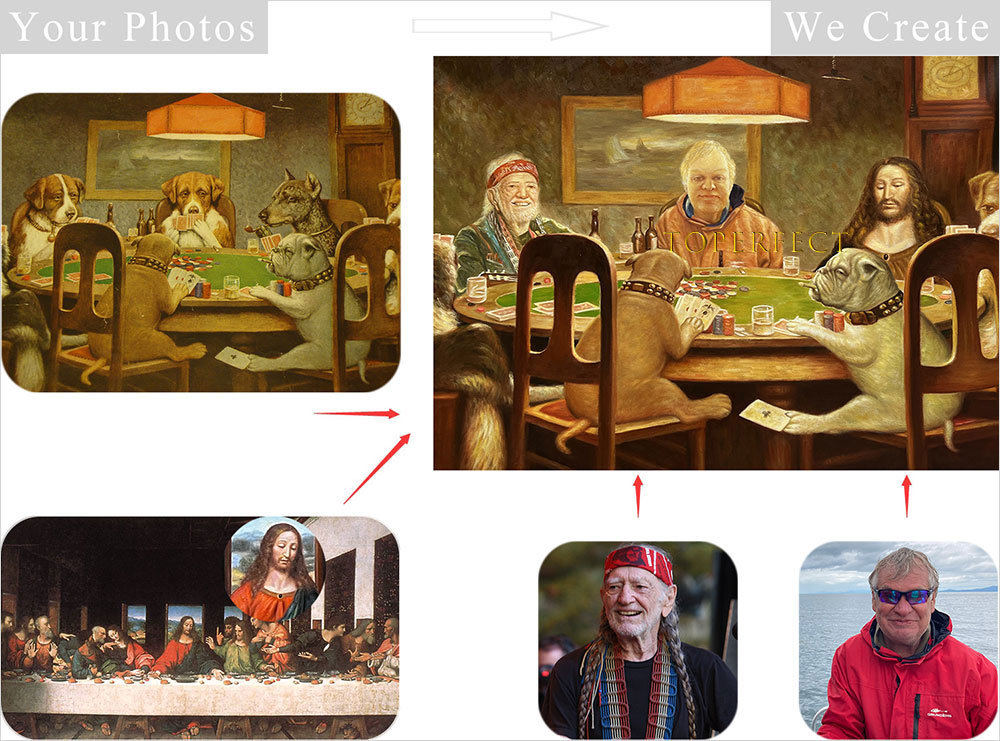
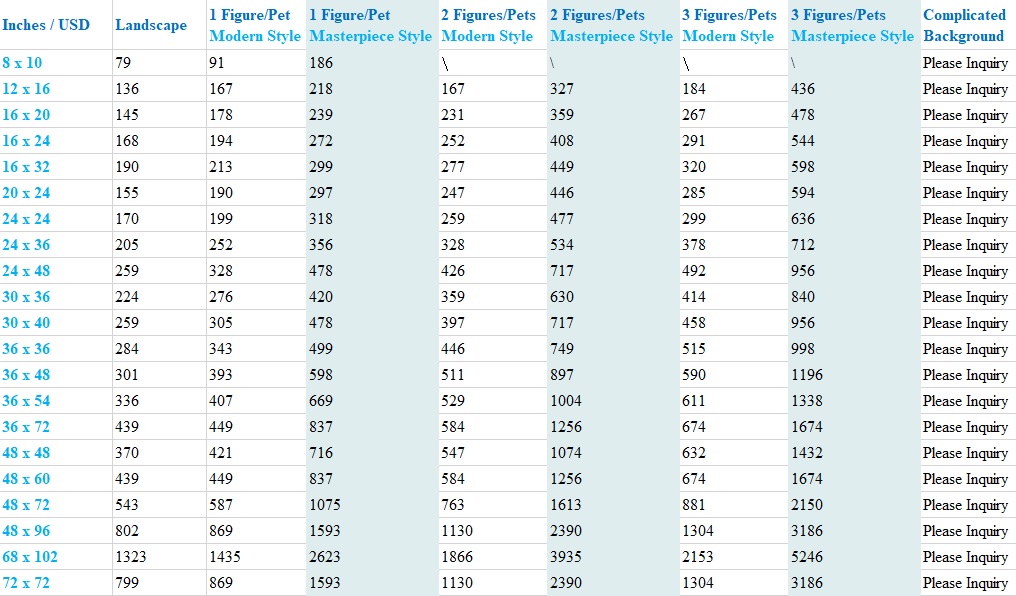
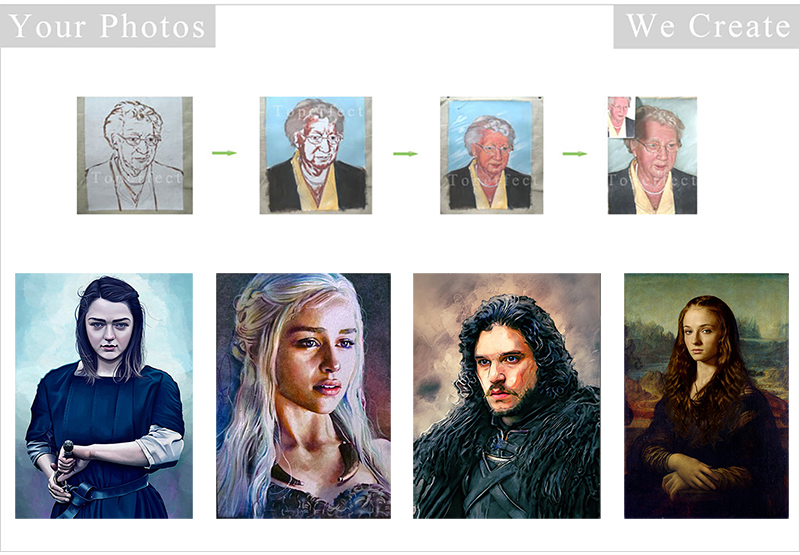

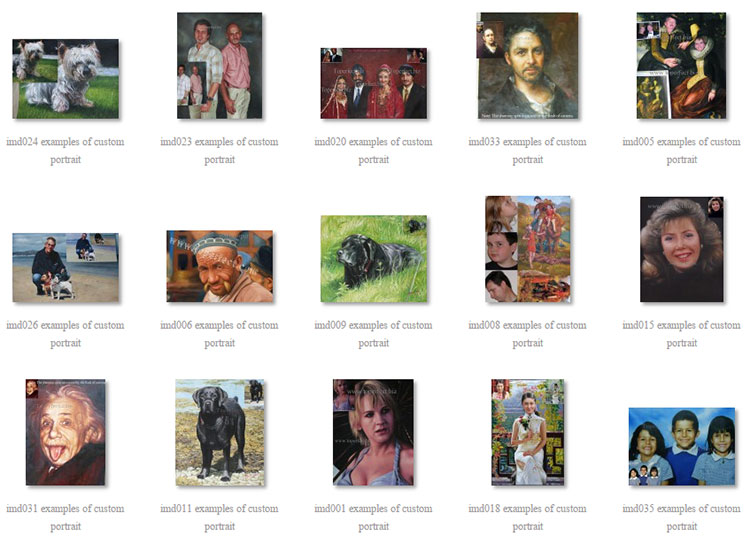
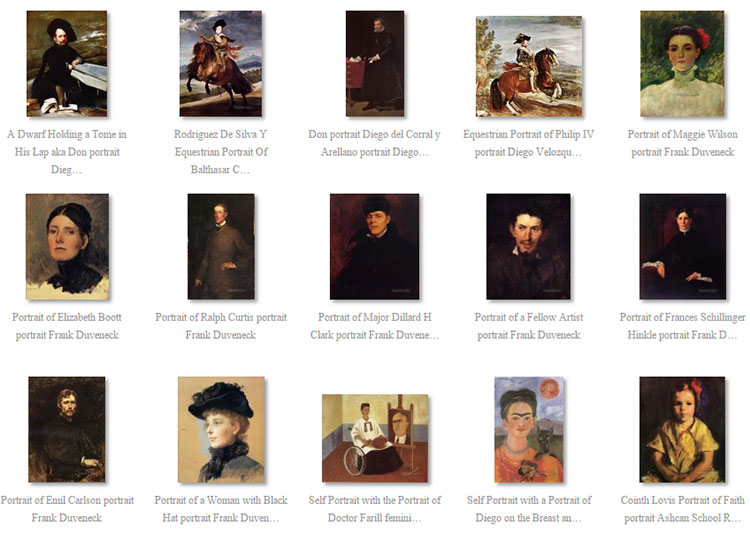
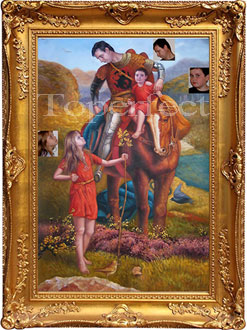
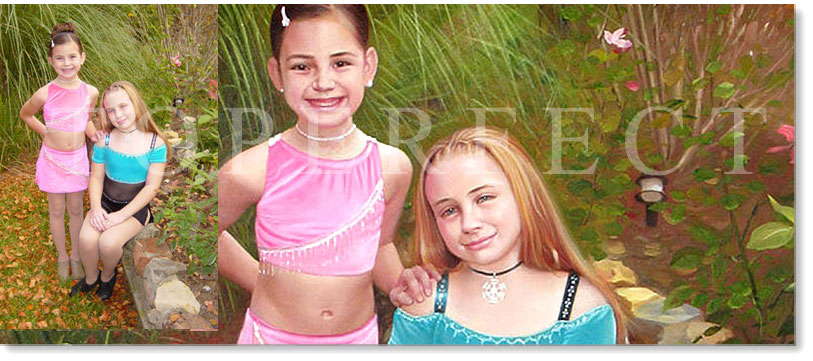
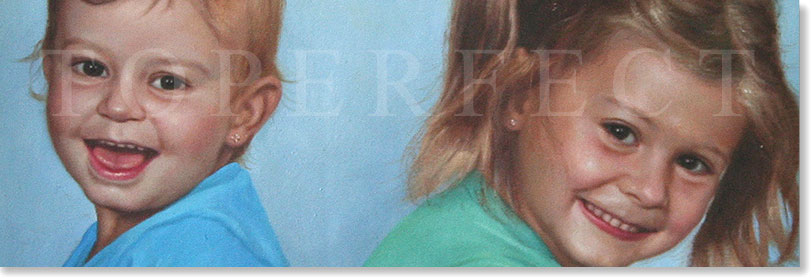
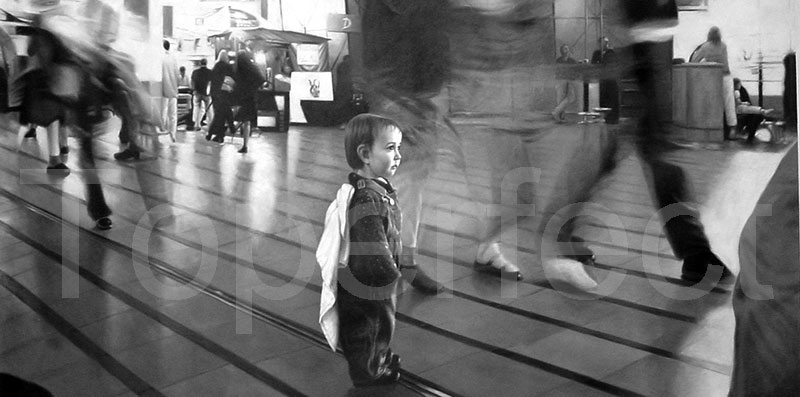
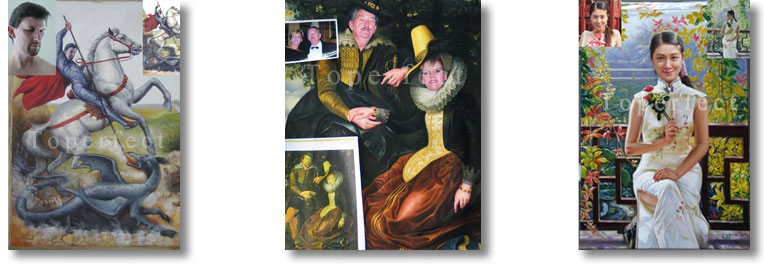
 Toperfect ([ˈtɔpəfikt]), Top & Perfect.
Toperfect ([ˈtɔpəfikt]), Top & Perfect.